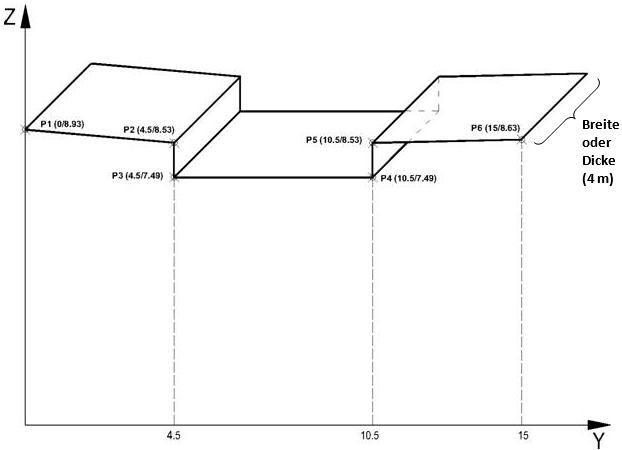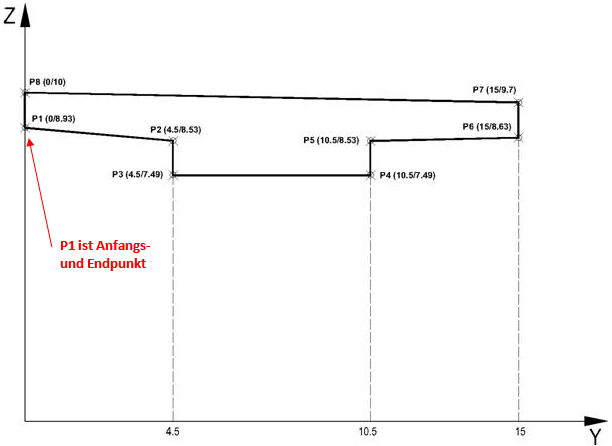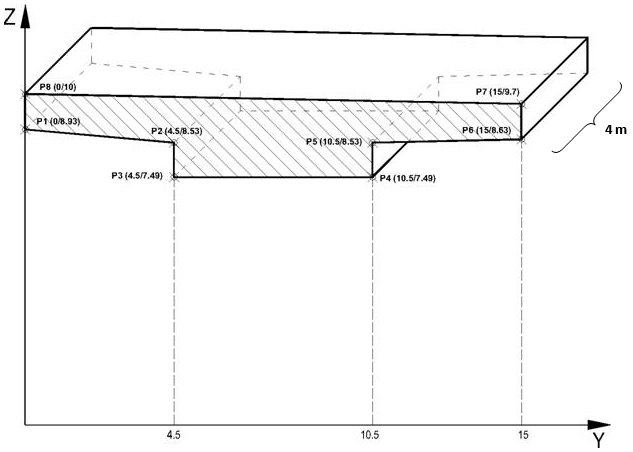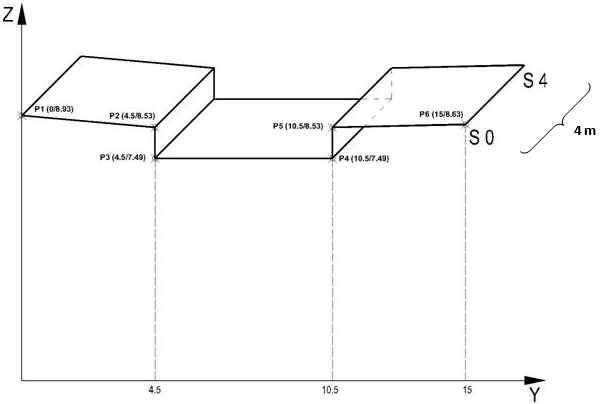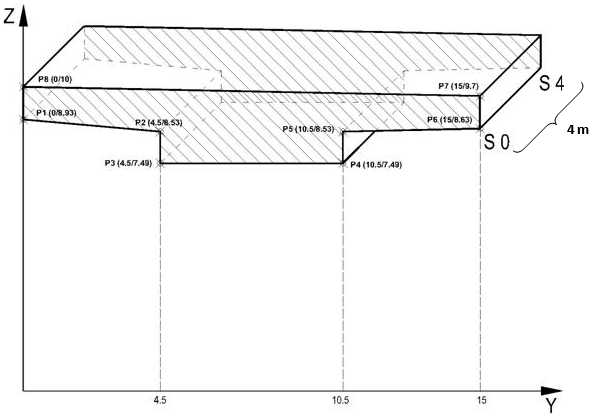Table of Contents
Formulas for the quantity calculation
Description
Various formulas are available for recording the quantities from your measurements and calculating the results, e.g. rectangle, trapezoid, cuboid, free formula, etc.
Which formulas with which formula numbers are available in a quantity statement is determined by the format that you use for the quantity statement in Create quantity statement have set.
In the Create quantity line Enter the formula number of the formula that you want to use to calculate the quantity or open an overview of the available formulas for Apply formula.
Formula 21
Straight from coordinates
Enter the coordinates of points P1 to P6 consecutively. After entering each value, switch with Enter to the next field. Leave the fields RZ (Arithmetic symbol) between the coordinate fields is empty. Enter an equal sign in the RZ field behind the last coordinate. Complete your entry with Enter .
The result of the example is a Length from 17,099 m.
Straight from coordinates with thickness
In addition to Straight from coordinates type in the last line the thickness in the field D .
The result of the example is a Area of 68,395 m².
Straight from coordinates with interruption
In addition to Straight from coordinates enter a minus sign to break the traverse. Enter the minus sign in the RZ field, which is located between the coordinate fields of points P3 and P4.
The result of the example is a Length from 11,099 m.
Formula 22
Irregular polygon from coordinates (positive area)
Enter the coordinates of the points Px consecutively. Go at it clockwise before, ie enter the coordinates of the points in the order P1, P8, P7, P6, P5, P4, P3, P2. To complete the area, wear finally point P1 again a. After entering each value, switch with Enter to the next field. Leave the RZ (arithmetic symbol) fields between the coordinate fields empty. Enter an equal sign in the RZ field behind the last coordinate. Complete your entry with Enter .
The result of the example is a Area of 24,915 m².
Irregular polygon made of coordinates (negative area)
Go like in Irregular polygon from coordinates (positive area) in front. However, wear the points counter clockwise on, ie P1, P2, P3, P4, P5, P6, P7, P8 and finally P1 again. This will give you a negative result (deduction area).
The result of the example is an area of -24,915 m².
Irregular polygon from coordinates with thickness
In addition to Irregular polygon from coordinates (positive area) type in the last line the thickness in the field D .
The result of the example is a Volume of 99,66 m³.
Formula 23
Area determination from cross-sections following Formula 21
First define the lengths of the stations (S0 and S4) using formula 21 (see Straight from coordinates). Select the entry in the line with the result H (Auxiliary value) from the column KE (License plate). You have thus defined the result as an auxiliary value.
Then use formula 23 to assign the appropriate length to the individual stations by referencing the auxiliary value. After entering each value, switch with Enter to the next field. Leave the fields RZ (Arithmetic symbol) blank. Enter an equal sign in the RZ field after the last value. Complete your entry with Enter .
The result of the example is a Area of 68,395 m².
Determination of quantities from cross-sections following Formula 22
First define the areas of the stations (S0 and S4) using formula 22 (see Irregular polygon from coordinates (positive area)). Select the entry in the line with the result H (Auxiliary value) from the column KE (License plate). You have thus defined the result as an auxiliary value.
Then use formula 23 to assign the relevant area to the individual stations by referencing the help value. After entering each value, switch with Enter to the next field. Leave the RZ (arithmetic symbol) fields blank. Enter an equal sign in the RZ field after the last value. Complete your entry with Enter .
The result of the example is a Volume of 99,66 m³.
Acquisition of station values and a length
Formula 23 is particularly suitable for calculating areas that have been measured by hand. Please note that the measured lengths are at right angles to the station axis!
The existing data cannot be used in a coordinate formula 22 because they do not describe a point in a coordinate system. Instead, you assign the corresponding length to each station value directly using formula 23. After entering each value, switch with Enter to the next field. Leave the fields RZ (Arithmetic symbol) blank. Enter an equal sign in the RZ field after the last value. Complete your entry with Enter .
The result of the example is a Area of 44,464 m².



